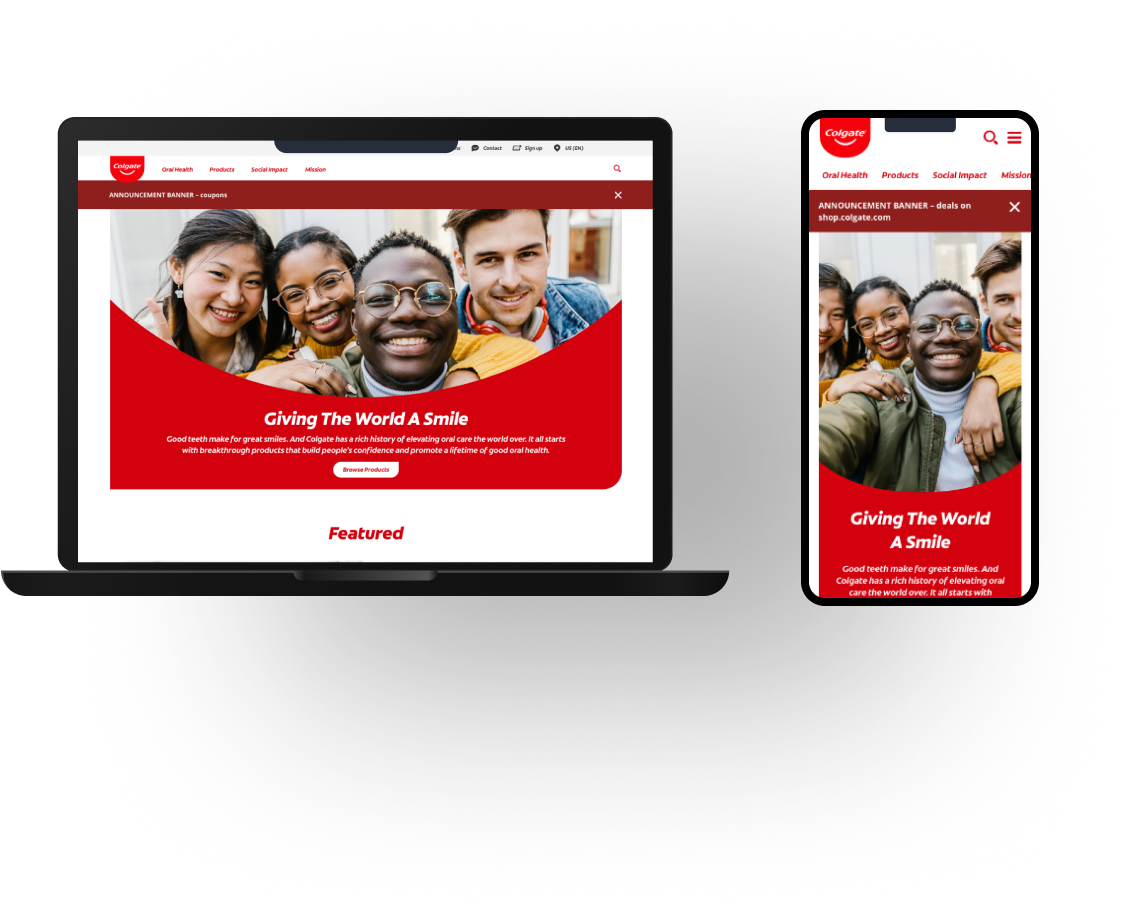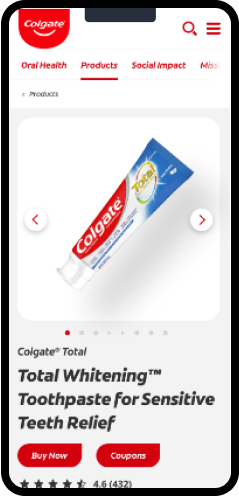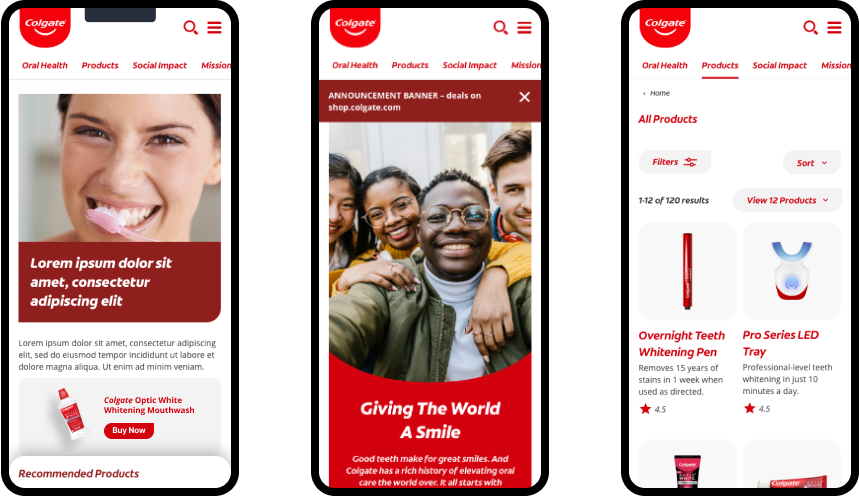Colgate.com: Turning readers into paying customers

Problem Statement
Content on Colgate.com was good at driving engagement and not product sales. My team's goal was to increase product sales online and offline by improving clear paths to purchase and improving product description pages.
UX Methodology
After implementing some fundamental design changes to improve the usability of the sites menu, cookies consent, and breadcrumbs, we iterated on designs while keeping a very close eye on conversion metrics. We tested only the riskiest designs.
Research & Insights
Other than usability testing, we also ran multiple usability tests with a couple of follow-up qualitative questions to answer the burning question: Why does anyone go to Colgate.com. In totally, our global research study spanned across 7 key markets: USA, UK, France, Germany, Mexico, Brazil, and India. We also triangulated our findings with Google Search Correlation Analysis and Topic Interest Analysis.
- In the USA, UK, France, and Germany, users mainly engaged with teeth-whitening content and in Mexico, Brazil, India, acute dental problems like cavities, gum disease (gingivitis), and plaque were more important to users.
- Users want immediate solutions. Don't make them hunt for the relevant product.
- No one wants to go to the dentist for teeth whitening or bleeding gums. Give users permission to use at home solutions and not go to the dentist.
Design
Product Pages
We standardised the product pages of 200 products across 77 geographies, creating modular templates that would meet the needs of user across the globe. With almost 200 products, some plain old $3 toothpaste and others $45 teeth whitening products, there was a huge discrepancy between how much content there is and how much content a user needs.
We focused on creating a universal hero section, where to buy section, and product benefit section

Paths to Product Pages
We fixed three key paths to purchase: Article page to Product page, All Products page to Product page, and Homepage to Key product categories. After a few iterations, we made product recommendations on article pages more discoverable by embedding banners into article content. We also redesigned the All Products page and the homepage to better integrate products with the overall brand.

Impact
Product Page design changes resulted in an increase of converion from 2.65 to 4.7%.
The average conversation rate from 2-step paths to purchase increased to 0.14 to 0.21%.
Reflections & Next Steps
I always felt like I was playing catch up, with fundamental upkeep having been neglected over 4 years before I was onboarded. We were shipping design improvements that were long overdue.
With so many balls rolling at any given time, much of the work I did was still in progress at the time I left the company. However, small victories began to add up. I would have liked to continue to push on those metrics. Prioritisation was a very cut-throat process in order to maximise the impact design changes would have on the site.